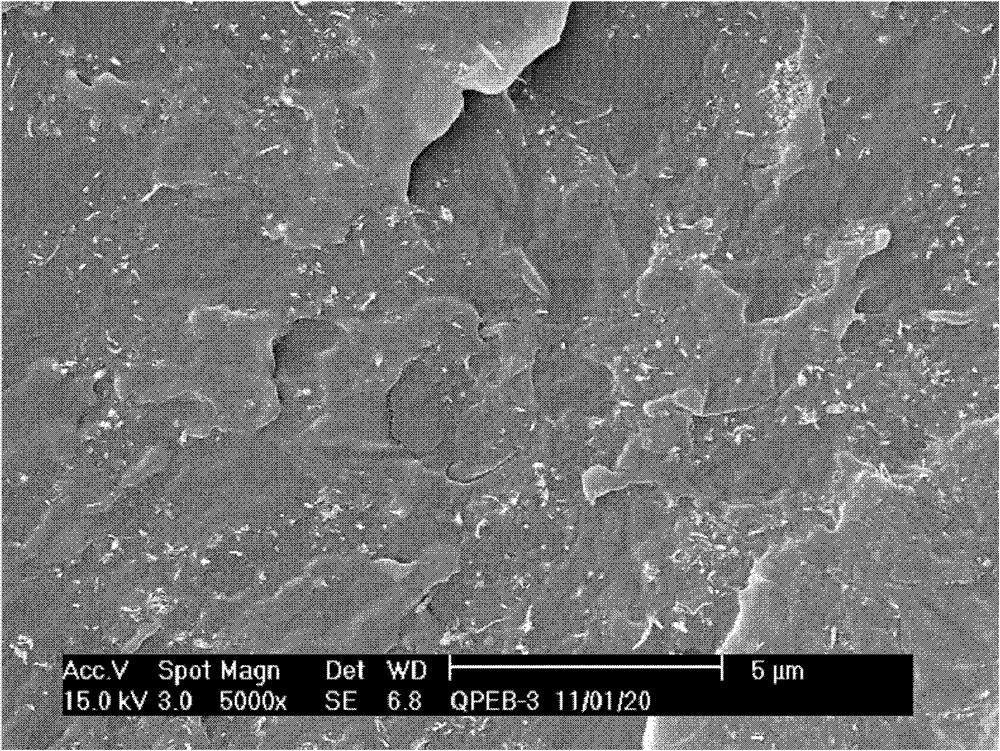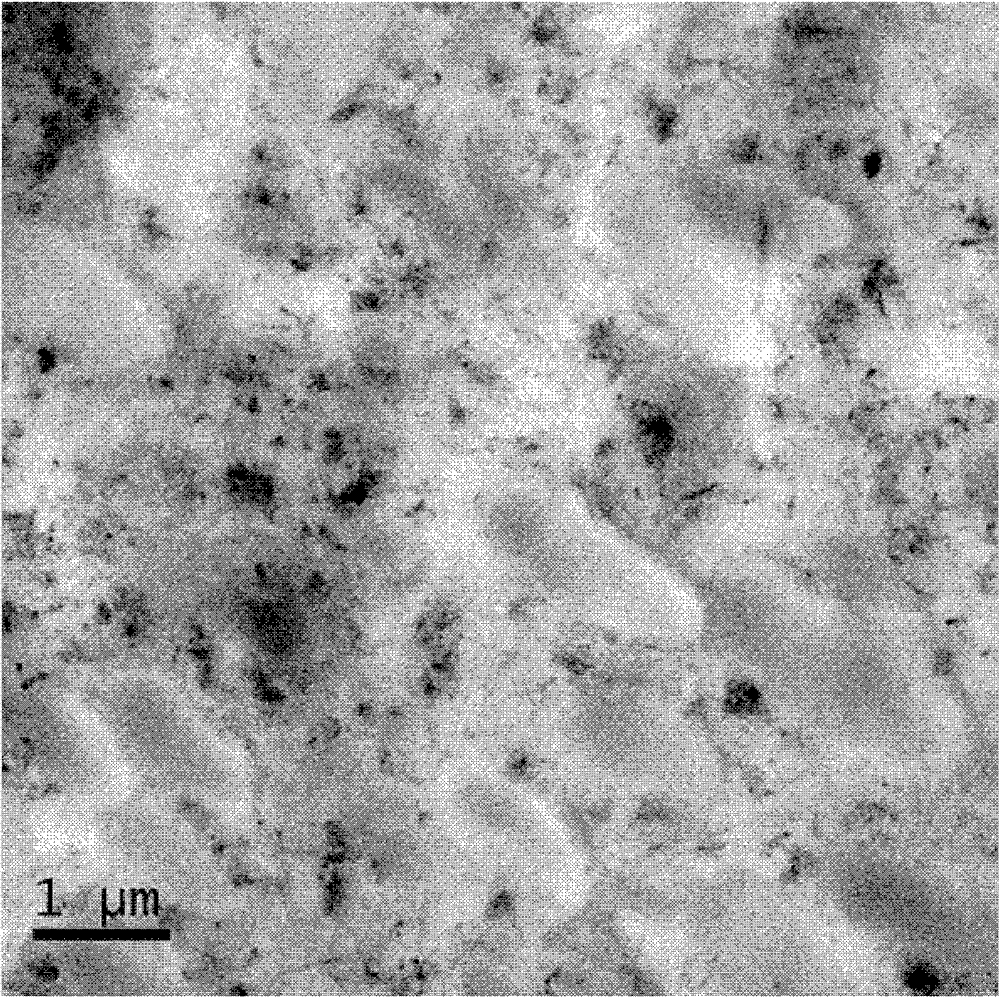Carbon nanotube/polyolefin conductive composite material and preparation method
A conductive composite material and carbon nanotube technology, applied in the field of polymer materials, can solve problems such as easy agglomeration, increased cost, and complicated operation process
- Summary
- Abstract
- Description
- Claims
- Application Information
AI Technical Summary
Problems solved by technology
Method used
Image
Examples
Embodiment 1~13
[0033] (1) Homopolypropylene (F280Z, Yangzi Petrochemical), linear low-density polyethylene (DFDA7042, Yangzi Petrochemical), carbon nanotubes (multi-walled carbon nanotubes, American Cheaptubes, diameter 20-30nm, length 20-30μm) And antioxidants (tetra[methyl-β-(3,5-di-tert-butyl-4-hydroxyphenyl)propionate]pentaerythritol ester and tri(2,4-di-tert-butyl)phenyl phosphite The weight ratio is 1:1), and the dispersing aid (white oil) is premixed in a high-speed mixer, and melt-blended in an internal mixer at 200° C. for 15 minutes. The material ratio of each embodiment is shown in Table 1.
[0034] (2) The CNTs / polyolefin composite material after melt blending is molded into a circular sample with a diameter of 10 cm and a thickness of 1.5 mm for electrical performance testing. The test instrument is a PC68 megger, and the test standard is GB_T 1410-2006 , the measured volume resistivity and volume conductivity of the composite materials are shown in Table 1.
PUM
 Login to View More
Login to View More Abstract
Description
Claims
Application Information
 Login to View More
Login to View More - R&D
- Intellectual Property
- Life Sciences
- Materials
- Tech Scout
- Unparalleled Data Quality
- Higher Quality Content
- 60% Fewer Hallucinations
Browse by: Latest US Patents, China's latest patents, Technical Efficacy Thesaurus, Application Domain, Technology Topic, Popular Technical Reports.
© 2025 PatSnap. All rights reserved.Legal|Privacy policy|Modern Slavery Act Transparency Statement|Sitemap|About US| Contact US: help@patsnap.com



